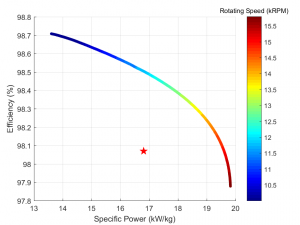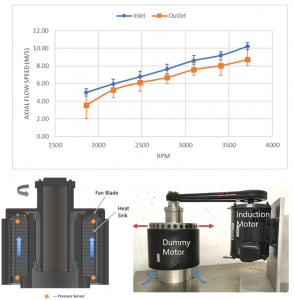Multi-Physics optimization of high-frequency air core permanent magnet motor for aircraft applications
Xuan(Melody) Yi with adviser K.Haran
The current aviation industry demands sustainable environmentally friendly and fuel-efficient. It has been theoretically shown that superconducting machines can power electric airplanes to carry hundreds of people. These machines apply superconducting technology to produce dramatically high flux density and high current density, and thus reduce weight and volume. Conventional machines for aircraft applications must reach a power density of 8 hp/lb (four times greater than the existing state-of-art) to produce similar results. In this project funded by NASA and the Grainger Foundation, a non-cryogenic, high-frequency, high-pole-count, high-speed air-core permanent magnet motor is proposed. An efficient multi-physics optimization method that can accurately predict electric and thermal performance of such a machine is developed and verified with finite element analysis. Optimum machine is obtained using a genetic algorithm coupled with an established multi-physics model requirement.
Currently, multi-objective optimization can run smoothly with the multi-physics modeling. The Pareto front relative to efficiency and specific power can be obtained for various design parameters, including pole number, speed, electric loading, magnetic loading, etc. The Pareto front between specific power and efficiency at various speeds is shown in Figure 1. It indicates that higher-speed designs result in higher power density but lower efficiency. Beyond analytical modeling, some hardware tests were conducted to verify thermal assumptions and modeling. The centrifugal fan performance was verified through a dummy-rotor spin test to confirm sufficient air flow rate pumped through the machine. Initial flow speed within the heat-sink channels and hardware setups are presented in Figure 2.

